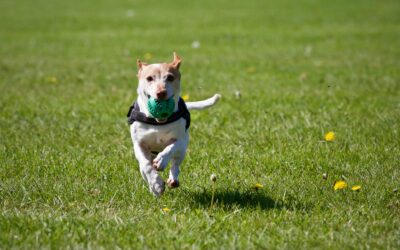Deciding whether your dog will live inside or outside
the house is a decision that will influence your dog’s behaviour and attitude as an adult.
This topic can be heavily debated, with the ‘inside’ group not understanding why you would have a dog and not have him part of the family… inside!
The outside group’s argument………that’s where they lived when I was a kid! What’s all the fuss about… he’s just a dog!
The companionship benefits of having your dog inside, can’t be underestimated.
Dogs are pack animals, they love nothing better than spending time with their human family.
A dog’s DNA, have them seeking social structure, looking for a pack to form a bond, this is your family. They want to go where you go, they want to be with you, whenever, wherever possible, NOT isolated outside!
Inside dogs are learning all the time they are with you. He soon learns what behaviour will earn him attention, a walk, some serious cuddles or couch time. In return, you will understand what makes him tick!
Dogs enjoy the outside, especially if they are going with you on a walk, or to have a game, or just interaction. Dogs are social animals that are used to living in packs, so spending long hours alone leaves them prone to feeling lonely, bored and marginalized. One of the most common problems in dogs that spend many hours alone is separation anxiety, which directly affects their behaviour, making them anxious, stressed and destructive.
For that reason, even if you train your dog on a daily basis, you may start to notice your dog’s behaviour becoming unruly and uncharacteristic. They may also start suffering from “resource guarding”, which is when they guard their territory and can become aggressive and dangerous, even towards their owners. Dogs enjoy being surrounded by social stimuli your family moving about your home]. Without that, they will fiercely defend their territory – or backyard – and become harder to train.
Outside only dogs, develop other problems eg. barking, digging, destruction of the garden and furniture, self-mutilation, obsessive-compulsive behaviours. These negative behaviours can become self-rewarding habits.
Outside dogs can be hard to settle on a walk, their energy level increases with the sheer excitement of someone giving them attention by taking them for a walk. When an outside dog only, attends our training programs, the dog finds it extremely hard to settle. He can’t believe the wow factor of how many dogs he sees, let alone the attention he is receiving from his owner.
An inside dog will let you know whether there is someone lurking, or a possum on the fence. You will learn his different bark tones.
Without adequate socialization, an outside dog may become aggressive, ready to bite anyone who comes into his territory.
Bored and lonely, outside dogs don’t have the same connection, or bond that inside dogs enjoy, their interaction is limited with their human pack.
Avoiding those fur balls that gather in the corners of your home, keeping your home neat, tidy and organised more important, than having your canine companion moving about inside your home, listening, taking instruction and becoming a valued family companion. Mmmmm something to consider!
Dogs crave regular interaction with the family, this is one of their basic needs, just like food and water.
When your dog is permitted indoors, there are positive benefits
• Easier to train and more responsive to commands
• Understands rules and respects no go zones
• More settled
• Protects, ‘his family pack’
• Less behaviour problems
Enjoy the companionship of your canine companion, inside your home.
A young puppy consigned to life outside can become pushy, dominant and aggressive, when on the lead or when permitted inside time.
Bringing your dog inside.
Take him for a long walk, before bringing him inside. A tired dog is generally more settled.
Don’t just open the door and tell him to come in! Give him a sit/stay command, then invite him in. Either lead him to ‘his mat’ or give him a direction to go to ‘his mat’. Reward when he is on the mat. If you move to another room, re-locate the mat so he can be with you. Be conscious of his good behaviour inside and reward extensively. You will make a connection with him.
If your dog is turbocharged, put his lead on and wait until he is settled before entering your home, this way you will maintain control of what he does and where he goes.
Older dogs, shelter dogs, rescue dogs, put the lead on when first introducing them to the inside of your home. Give these dogs an ‘out’ command with a slight correction on the lead, as you stroll past your designated ‘no go’ zones.
Tiled floors can be somewhat of a challenge, try placing some yoga mats around for him. The yoga mats become his walk zone. Don’t forget to reward him for every small step, when he’s doing the right thing in your home.
Monitor your dog, especially when children are present, reward his good behaviour, keep your focus.
Don’t be ‘on edge’, waiting for him to do the wrong thing.
Relax and Enjoy
Inappropriate behaviour within your home can be managed with preparation. Brief training sessions inside, on lead, will soon see your canine companion cruising the inside of your home and enjoying life as part of your pack, your family.
Good manners don’t just happen, they are the result of a responsible owner who has taken the time to teach and train his dog, basic obedience commands at……………………you guessed it CENTENARY DOG OBEDIENCE.
written by Lee Hettiger





0 Comments